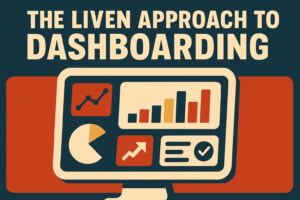DRY (do not repeat yourself) is a principle in software development that aims to reduce redundancy in code...
Read MoreGuide to Tableau
Summary
This article is intended to inform you about Tableau without the sales pressure from a Tableau sales rep. The sections of this article are built based on the most common questions we receive about Tableau in our consulting practice.
What is Tableau?
Starting at the most general level Tableau is a Business Intelligence (BI) tool that excels in data visualization. These data visualization skills help you more easily understand trends and data insights. Let’s review some of the advantages and disadvantages of Tableau.
Advantages
- Ease of Use – Tableau does not require coding skills to build data visualizations. With five minutes of training a new user can put together their first bar chart.
- Integration – It is easy to use Tableau’s connectors to connect a wide variety of data sources into your dashboard. Tableau easily incorporates data that exceeds millions of rows before you notice any performance issues.
- Great Visualizations – Right out of the box Tableau produces modern visualizations that will put any excel power user to shame.
Disadvantages
- Data processing – It is easy to connect to data using Tableau, however Tableau is not an ETL tool. If your data is overly complex or requires heavy processing you will want to use a more specialized tool like Tableau prep, Python or use custom SQL from a database.
- Cost – The pricing on Tableau is a benefit in that you get many features of an enterprise solution at low cost. However, many of our marketing clients prefer to use Google Data Studio because it is ‘free’. What is often overlooked with Data Studio is only has 1/10 th of the abilities of Tableau.
- Ease of Use – Yes this was listed in advantages. As easy as it is to open up Tableau and build some basic visualizations, creating a well-designed dashboard that incorporates all of your data is a skill that takes years of practice.
What Are the Different Tableau Options?
The Tableau ecosystem consists of four main tools. These tools are Tableau Desktop, Online/Server, Viewer and Prep.
Tableau Desktop
Tableau Desktop is responsible for doing the work in Tableau. Think of this as the Excel application on your computer. If you want to create tables, visualizations, or connect to data Tableau desktop is the tool you will be using.Tableau Online/Server
Tableau online/server is the environment where you can store all the dashboards you make in Tableau desktop. Here you can share to other users, schedule data refreshes and schedule emails or alerts when something in your data changes. Online is a server hosted by Tableau, while with Server you are responsible for hosting. For most of our clients Tableau Online is the solution you want to go with.Tableau viewer
Think of viewer as a pdf reader. After you produce a dashboard in Tableau desktop you can share it with someone that does not have Tableau desktop. Viewer allows the person to view and interact with the dashboard without paying for a license.Tableau prep
ETL is not a strong suit of Tableau. You can use the data source pane in Tableau desktop to handle most things, but what if you need to join multiple data sources, clean the names, transpose the data and more. For this type of work Tableau created the Prep tool.What Are the Different Licenses?
Note this is subject to change. With the entrance of Power Bi and other competitors Tableau has changed their pricing by removing the license minimums. This makes Tableau much more affordable for teams.
The three license types are Creator, Explorer, and Viewer. 99% of the time your needs are going to fall in either the Creator or Viewer tier, so we are going to focus on those license types.
Creator License
This license is the basis for your Tableau setup. It gives you a Tableau Desktop, Online/Server and Prep license. This license is meant for the person building and maintaining the dashboards built within Tableau. If you are publishing reports, you will need a creator license. A Creator License costs $840 a year.Viewer License
Viewers are the consumers of your reports. They can see the dashboards uploaded to Online/Server. They cannot publish content. Viewers can get alerts from Online/Server, but a creator must create the alert. A Viewer License costs $180 a year.Related Articles We Think You Would Enjoy Next
Reporting Unleashed: Elevate Your Small Business with SMART Data Reporting
Reporting is often the most overlooked piece of data analytics. Reporting is the key cog in the data analytics.
Read MoreThe LIVEN Approach to Dashboarding
Dashboards are the lifeblood of business reporting, but how do you know that the dashboard you are building will be valuable...
Read MoreYou are now equipped with the information necessary to better understand Tableau. If you are still stuck, contact us. We have years of experience deploying and building Tableau systems

